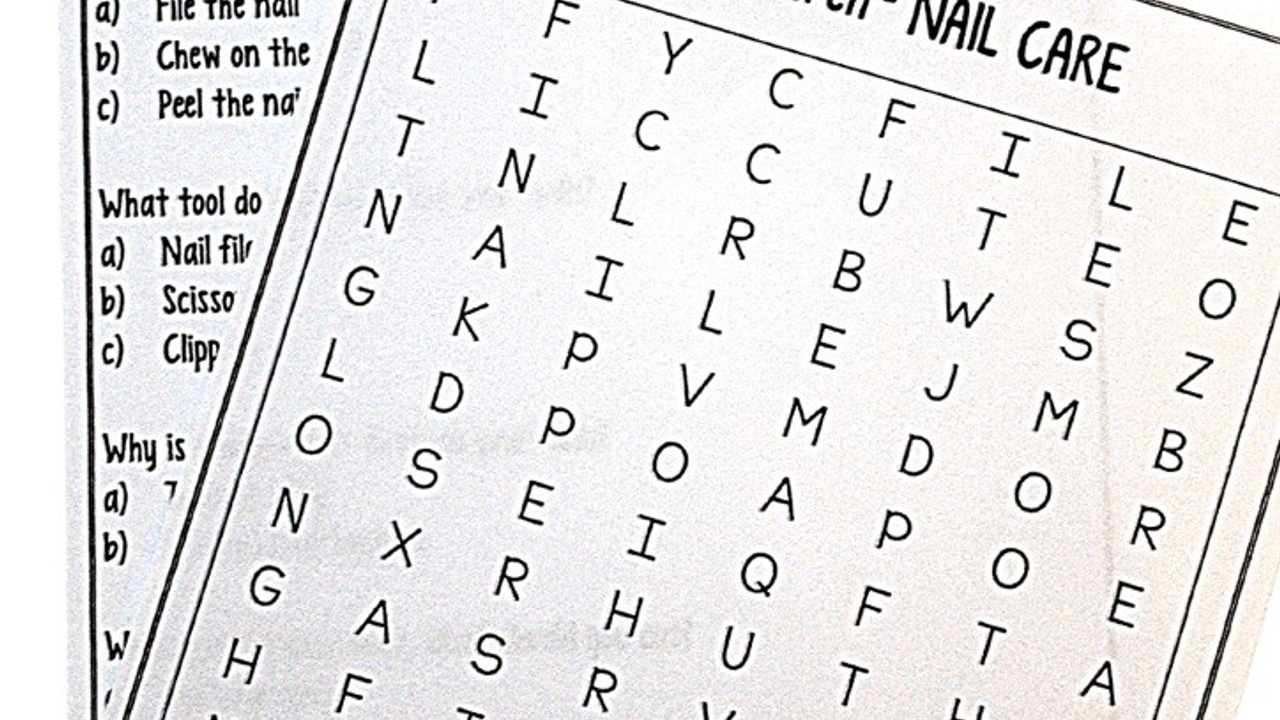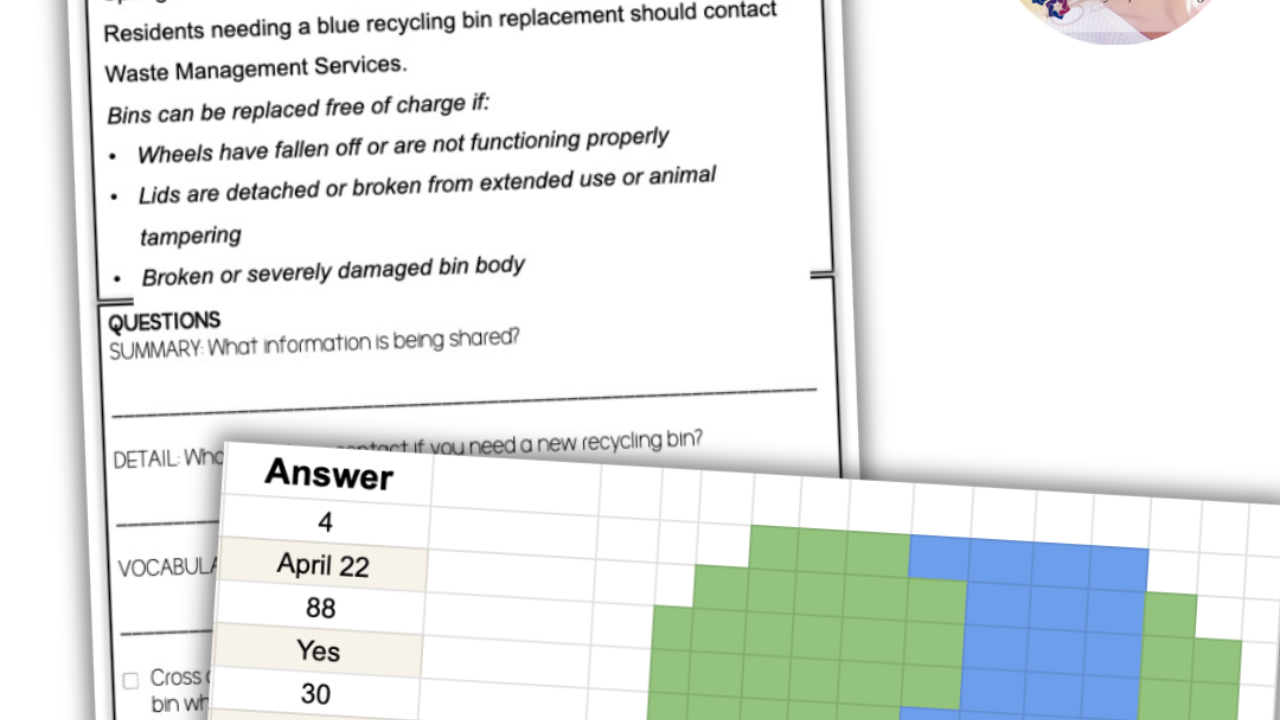Teaching Life Skills: Nail Care Lesson Plan [Special Education]
Sep 13, 2021
Importance of Nail Care
Nail care can easily be seen as a skill that can be pushed off for another day (or another school year). However, having long, jagged, dirty nails can hinder progress in other personal hygiene goals.
While taking care of your fingernails and toenails isn’t a daily task, it is likely a weekly task and may be utilized more frequently than going to the bank (and think about how highly we prioritize banking skills in our schedule). If your students can become more independent in caring for their own nails, both fingernails and toenails, then their overall hygiene will reach new, manicured heights!
Focus Skills
-When to care for finger nails and toe nails (frequency and after showering)
-What a rough/jagged nail looks like
-Supplies needed to care for nails
-How to hold a nail cutter and cut nails using nail clippers
-What part of the finger/nail to cut
-How to hold and smooth nails using a nail file or emery board
-How to clean under the nail using a brush
Why Focus On These Skills
Regardless of how long your young adults keep their own manicures, they need to be clean and filed, and visiting a nail salon may not be the best way financially to care for one's nails. If you have students who keep their nails long, then they may get dirty throughout the day. If you have students who bite their nails, then keeping them clean will reduce ‘eating’ whatever dirt gets stuck underneath.
Clean and filed nails are the basics of proper nail care, regardless of length, are associated with overall cleanliness and personal hygiene. If your students are cooking or working with their hands, having clean a clean nail bed and filed nails might be a job requirement because it reduces the risk of passing unwanted germs and bacteria. Therefore, taking proper care of the nails might be considered necessary skills to master because of a student's vocational education programming or a next step in independent living skills as part of adult education goals.
Looking at nail care as a skill, it is quite involved. While the overall skill is the same, such as cutting nails, there are slight differences between fingernail and toenail care. Thick toenails can make them harder to cut than fingernails. The angle at which one holds the clippers or nail file may be different with hands vs toes. Soaking fingers and/or toes in warm water is a sensory experience some may not enjoy. Some students may have a hard time with precision, as cutting too close may cause cuts and bleeding in sensitive areas. Cutting toenails often takes physical movement and placement of many body parts to achieve (bending at the waist to reach the lower legs, moving the knee over, holding the right foot with one hand, clipping with the other, etc.). Even with all these typical learner struggles, it is still important to prioritize special care for one's nails.
When To Teach
You can pair nail care lessons when you teach handwashing as hand hygiene could be associated together, or you could end a personal hygiene theme with nail care. Depending on your students with special needs, you may be teaching them to be independent in this task, the reason for keeping nails clean, or assisting in increasing tolerance of nail care by a caregiver.
Another idea is to address nail care when you teach kitchen safety. While this initially might seem unrelated, having clean nails when preparing food by keeping them short and clean is a way to stop the spread of germs! So, if you’ve already passed the personal hygiene theme for the year, then loop this into your next cooking and kitchen lesson!
It might be a good idea to consult with the occupational therapy related service provider as they may have goals and insight into how and when (or to whom) to teach nail care skills.
I’ve created a complete lesson unit of materials for teaching this topic. The materials are comprehensive (3 full lessons) and most appropriate for life skill lessons at the middle school, high school and transition level students. Below are some lesson unit highlights!
Lesson Objective
Students will identify the steps to clean, cut, and file their nails (fingers and toes).
Lesson Vocabulary
Break, clippers, cut, file, fingers, long, nail, rough, smooth, toes
-
Pre and Post assessment
-
1 page narrative explaining the skill with and without visual text supports (to incorporate functional reading)
-
5 skill practice activities for group and independent work to learn and/or reinforce the focus skills
-
Boom Cards for practice or assessment
-
5 strategies for success (tips for being successful with the focus skills)
-
Student learning reflection worksheet (thumbs up or down)
-
Coloring page with on-topic graphics
-
Homework sheet to encourage students to practice the skill outside of the school setting
-
Word search of key vocabulary terms
-
Visuals for focus skills with age appropriate colors and graphics
Ultimate Goal
While you may have a picture in your head of your students short, perfectly square, filed to perfection fingernails and toenails, as if they saw an experienced nail technician, that isn’t the overall goal. The actual nail care goal is to be able to know when the nails need to be cleaned and trimmed, how to safely hold and cut the nail, and how to smooth it out.
For those special education students who might struggle with the fine motor skills associated with nail care, increasing their skill in one step or upping their tolerance to allow someone else to assist them can be a step in the right direction!
Family and parents will also appreciate if this type of independent living skill is practiced as their child's nails may be a personal care routine the caregiver(s) would love to see their loved one feel more confident handling.


















